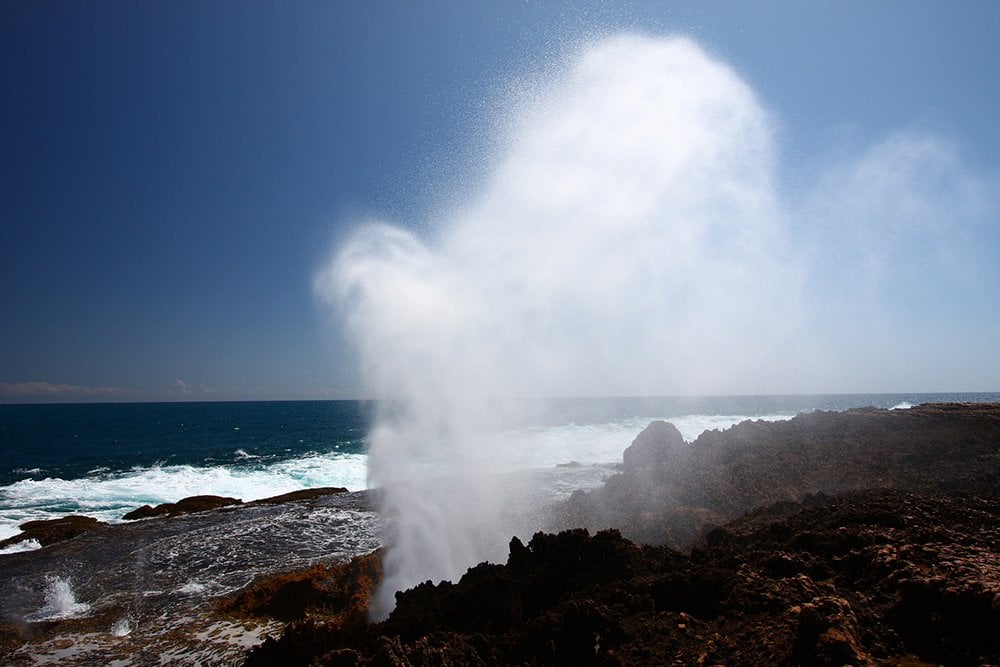Six of the best blowholes

1. Kiama, NSW

Image: profernity/flickr
When the seas are heaving and the wind blows from the south-east, the Kiama blowhole can shoot water 60m into the air, making it one of the highest in the world. The region’s indigenous people, the Wadi Wadi, call it Khanterintee, which means ‘mysterious noise’.
2. Cape Bridgewater, VIC

Image: Moshe Reuveni/flickr
Pounding waves have sculpted tunnels into the dramatic cliffs in Discovery Bay Coastal Park, west of Portland, Victoria. Landlubbers can view three blowholes; the more intrepid can hoist the mainsail and inspect countless others from the sea.
3. Bicheno, TAS

Image: Leonemoff/flickr
The force of the sea has ruptured the coastal rock near this east-coast town. Beware: the spout is so powerful and unexpected it has been known to blow people right off their feet.
4. Quobba Blowholes, WA

Image: njbawden/flickr
It wasn’t until 1911 that Europeans stumbled upon this incredible sight, 60km north of Carnarvon: about 30 blowholes in one rock platform spouting water as high as 20m into the air.
5. Whale Rock, North Stradbroke Island, QLD

Image: recoverling/flickr
Word play mixes with ocean spray at this rocky headland on the north end of Stradbroke Island. Aboriginal people refer to it as Wail Rock, after an abandoned woman whose cries can be heard in the whistling wind and the whooshing blowhole. Europeans named it Whale Rock, as it can be mistaken for one of the region’s many migrating whales.
6. Torndirrup National Park, Albany, WA

Torndirrup NP, WA, has impressive rock formations along the goast, including the Gap, Natural Bridge and the Blowholes, all shaped from the local granite. (Image: denlsbln/flickr)
Located on the coast south of Albany, this series of blowholes emerges from the rocky shore through holes gouged out by the turbulent Southern Ocean.
Source: Australian Geographic Issue 91 (Jul-Sep 2008).




